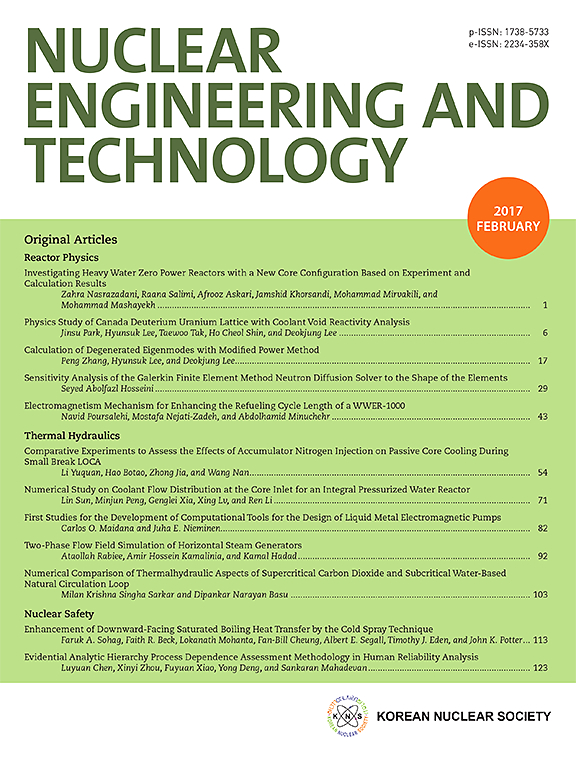Qualification of L-DED 316L for nuclear reactor core applications – Material characteristics before and after neutron irradiation
IF 2.6
3区 工程技术
Q1 NUCLEAR SCIENCE & TECHNOLOGY
引用次数: 0
Abstract
The mechanical and microstructural properties of heat treated laser direct energy deposition (L-DED) fabricated austenitic stainless steel 316L were investigated before and after neutron irradiation in the LVR-15 research reactor dry capsule. Tensile tests were carried out at room temperature and elevated temperature followed by light optical microscopy (LOM) and scanning electron microscopy (SEM) analyses of the microstructure. The results showed that the L-DED material exhibited superior ultimate tensile strength (Rm) and yield strength (Rp0.2) mainly due to its smaller grain size (approximately 4x smaller), compared to conventionally manufactured steel. Despite promising mechanical properties, microstructure misorientation analyses revealed incomplete recrystallization after heat treatment, which may affect long-term performance under nuclear reactor conditions. However, no notable differences were observed in the material microstructure between conventionally fabricated and L- DED fabricated materials due to neutron radiation. These findings support the potential of not only laser-deposition but also AM in general as a viable technique for producing in-reactor components.
核反应堆堆芯用L-DED 316L的鉴定。中子辐照前后的材料特性
研究了激光直接能量沉积(L-DED)制备的奥氏体不锈钢316L在LVR-15研究堆干胶囊中辐照前后的力学和显微组织性能。在室温和高温下进行拉伸试验,然后进行光学显微镜(LOM)和扫描电子显微镜(SEM)分析微观结构。结果表明,与常规制造的钢相比,L-DED材料具有更高的极限抗拉强度(Rm)和屈服强度(Rp0.2),主要原因是其晶粒尺寸较小(约为常规制造钢的4倍)。尽管具有良好的力学性能,但显微取向错误分析表明,热处理后的再结晶不完全,可能会影响核反应堆条件下的长期性能。然而,由于中子辐射的影响,传统制备的材料和L- DED制备的材料在微观结构上没有明显的差异。这些发现不仅支持激光沉积的潜力,而且支持AM作为生产反应器内组件的可行技术的潜力。
本文章由计算机程序翻译,如有差异,请以英文原文为准。
求助全文
约1分钟内获得全文
求助全文
来源期刊

Nuclear Engineering and Technology
工程技术-核科学技术
CiteScore
4.80
自引率
7.40%
发文量
431
审稿时长
3.5 months
期刊介绍:
Nuclear Engineering and Technology (NET), an international journal of the Korean Nuclear Society (KNS), publishes peer-reviewed papers on original research, ideas and developments in all areas of the field of nuclear science and technology. NET bimonthly publishes original articles, reviews, and technical notes. The journal is listed in the Science Citation Index Expanded (SCIE) of Thomson Reuters.
NET covers all fields for peaceful utilization of nuclear energy and radiation as follows:
1) Reactor Physics
2) Thermal Hydraulics
3) Nuclear Safety
4) Nuclear I&C
5) Nuclear Physics, Fusion, and Laser Technology
6) Nuclear Fuel Cycle and Radioactive Waste Management
7) Nuclear Fuel and Reactor Materials
8) Radiation Application
9) Radiation Protection
10) Nuclear Structural Analysis and Plant Management & Maintenance
11) Nuclear Policy, Economics, and Human Resource Development
 求助内容:
求助内容: 应助结果提醒方式:
应助结果提醒方式:


